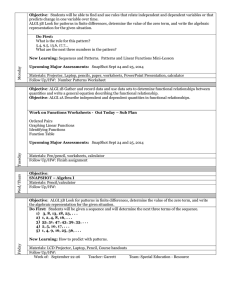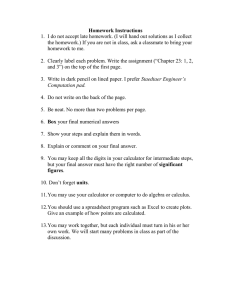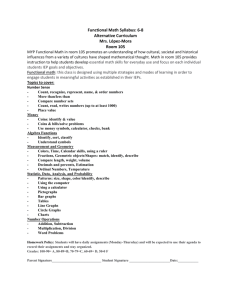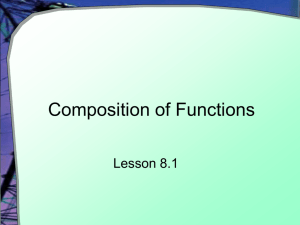Sept 22 - 26, 2014
advertisement
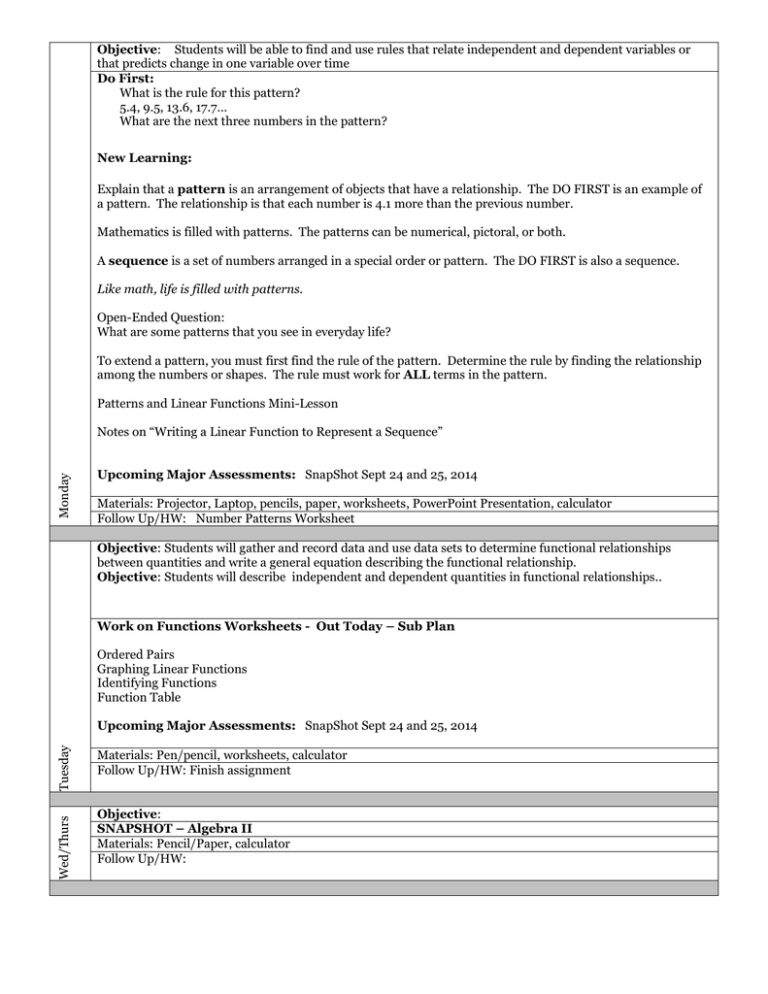
Objective: Students will be able to find and use rules that relate independent and dependent variables or that predicts change in one variable over time Do First: What is the rule for this pattern? 5.4, 9.5, 13.6, 17.7… What are the next three numbers in the pattern? New Learning: Explain that a pattern is an arrangement of objects that have a relationship. The DO FIRST is an example of a pattern. The relationship is that each number is 4.1 more than the previous number. Mathematics is filled with patterns. The patterns can be numerical, pictoral, or both. A sequence is a set of numbers arranged in a special order or pattern. The DO FIRST is also a sequence. Like math, life is filled with patterns. Open-Ended Question: What are some patterns that you see in everyday life? To extend a pattern, you must first find the rule of the pattern. Determine the rule by finding the relationship among the numbers or shapes. The rule must work for ALL terms in the pattern. Patterns and Linear Functions Mini-Lesson Monday Notes on “Writing a Linear Function to Represent a Sequence” Upcoming Major Assessments: SnapShot Sept 24 and 25, 2014 Materials: Projector, Laptop, pencils, paper, worksheets, PowerPoint Presentation, calculator Follow Up/HW: Number Patterns Worksheet Objective: Students will gather and record data and use data sets to determine functional relationships between quantities and write a general equation describing the functional relationship. Objective: Students will describe independent and dependent quantities in functional relationships.. Work on Functions Worksheets - Out Today – Sub Plan Ordered Pairs Graphing Linear Functions Identifying Functions Function Table Wed/Thurs Tuesday Upcoming Major Assessments: SnapShot Sept 24 and 25, 2014 Materials: Pen/pencil, worksheets, calculator Follow Up/HW: Finish assignment Objective: SNAPSHOT – Algebra II Materials: Pencil/Paper, calculator Follow Up/HW: Objective: Objective: Objective: Objective: Use the distance formula to calculate the distance between two points given map locations. Use the distance formula to calculate the distance between two points given their coordinates. Describe the distance formula in terms of perpendicular components. Create distance-related problems with real-world applications. Do First: Complete the Pythagorean Theorem Quiz to allow me to assess their understanding of the previous lesson and determine whether we can move on to distance and midpoint. New Learning: Friday Work through Explorations 1 through 5. -Comparing the patterns of change in tables and graphs for sequencing rules. 1.) For each rule in the set, students will produce a table of ( ) values with integer values with integer values of and graphs of ( ) values for between -5 and 5 2.) Record the table patterns and sketches of the graphs in the notes 3.) Compare the tables, graphs, and symbolic rules in the exploration. Students will note similarities and differences, and connections between the symbolic rules and the table and graph patterns 4.) Students will try to explain why the observed connection between rules and table/graph patterns make sense. Materials: LCD Projector, Laptop, Pencil, Course handouts Follow Up/HW: Week of: September 22-26 Teacher: Garrett Team: Special Education - Resource
